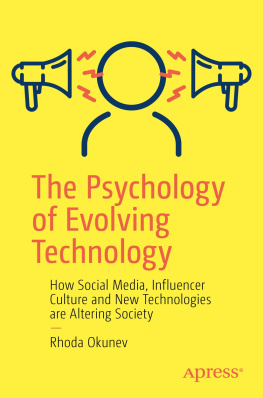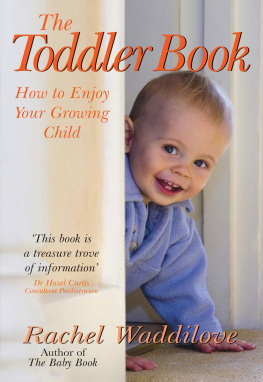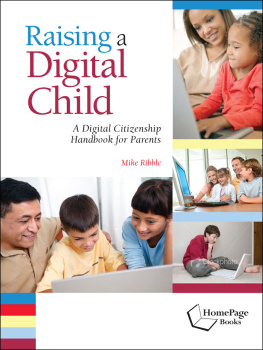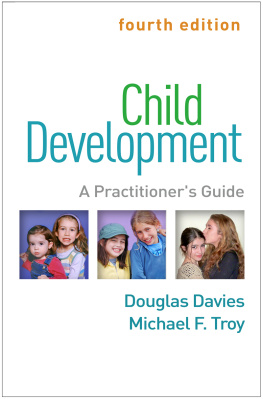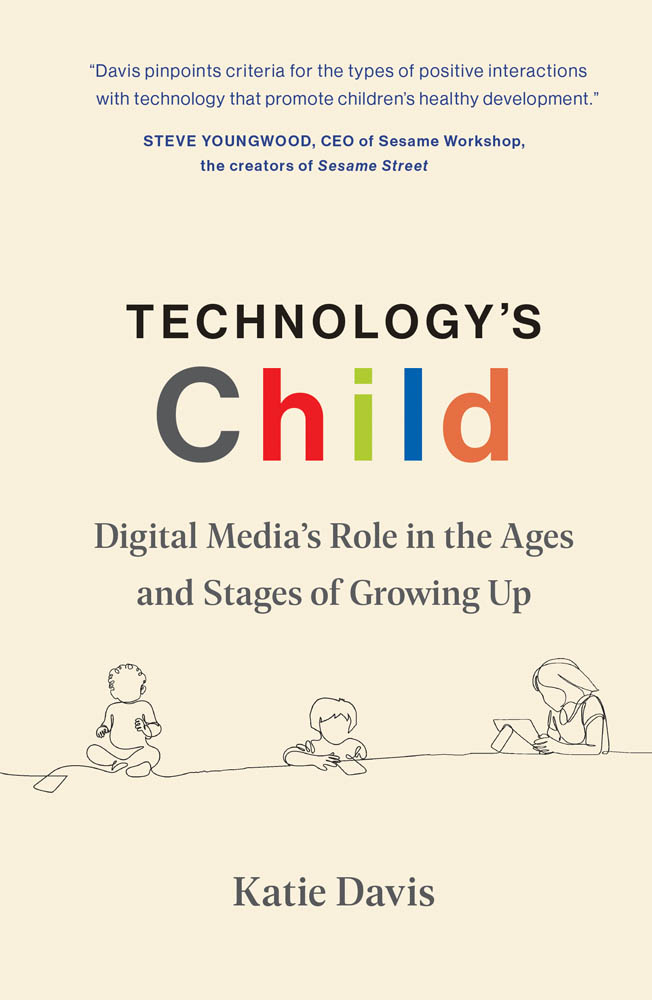
Technologys Child
Technologys Child
Digital Medias Role in the Ages and Stages of Growing Up
Katie Davis
The MIT Press Cambridge, Massachusetts London, England
2023 Katie Davis
All rights reserved. No part of this book may be reproduced in any form by any electronic or mechanical means (including photocopying, recording, or information storage and retrieval) without permission in writing from the publisher.
The MIT Press would like to thank the anonymous peer reviewers who provided comments on drafts of this book. The generous work of academic experts is essential for establishing the authority and quality of our publications. We acknowledge with gratitude the contributions of these otherwise uncredited readers.
Library of Congress Cataloging-in-Publication Data
Names: Davis, Katie (Assistant professor), author.
Title: Technologys child : digital medias role in the ages and stages of growing up / Katie Davis.
Description: Cambridge, Massachusetts : The MIT Press, [2023] | Includes bibliographical references and index.
Identifiers: LCCN 2022010139 (print) | LCCN 2022010140 (ebook) | ISBN 9780262046961 (Hardcover) | ISBN 9780262370080 (epub) | ISBN 9780262370097 (pdf)
Subjects: LCSH: Internet and youth. | Technology and youth. | Child development. | Digital media.
Classification: LCC HQ799.9.I58 D38 2023 (print) | LCC HQ799.9.I58 (ebook) | DDC 004.67/80835dc23/eng/20220831
LC record available at https://lccn.loc.gov/2022010139
LC ebook record available at https://lccn.loc.gov/2022010140
d_r0
I dedicate this book to my son, Oliver.
Contents
Research on kids and technology can be complicated, confusing, and inconclusive. Headlines and talking heads are even worse. This book brings clarity to the current state of knowledge related to technologys role in child development and provides guidance on how to apply the insights to individual children and adolescents so that their digital experiences will support rather than undermine healthy development.
The book examines the variety of ways that young people engage with technology across the course of their development, from toddlers who are exploring their immediate environment to twenty-somethings who are exploring their role in society. At its core, Technologys Child is about what happens when child development interacts with technology design and how this interaction is complicated by childrens individual characteristics and their social and cultural contexts.
My research indicates that technology supports healthy child development when its self-directed and community supported; it impedes development when its not. By self-directed, I mean technology experiences that are initiated, sustained, and ended voluntarily, and that support a feeling of personal accomplishment and growth. By community supported, I mean technology experiences that are embedded in broader contexts of support. Sometimes the support is surrounding the technology use, like when a parent or sibling helps a child navigate the interface of a literacy app and reinforces the learning concepts during and after the app session. Sometimes the support comes from within the technology experience itself, like when a teen finds a supportive online community whose members affirm the teens marginalized identity, or when a social media platform works out a thoughtful, effective approach to moderating hate speech.
Creating the best-case scenario isnt easy. It requires attention and work on the part of families and teachers, researchers, policymakers, and tech companies, and even young people themselves. The insights from this book will provide actionable guidance for each of these stakeholders.
So, what counts as technology for the purposes of this exploration? I focus my analysis on technologies that have one or more of the following qualities: digital (the 0s and 1s that undergird the pixels on your computer screen), interactive (the response you get when you make a swiping motion on your phone), and networked (the ability to consume and share content and connect with others across devices). Many of the technologies I examine have screens (phones, tablets, laptops), but not all (smart speakers, smart toys, and other devices powered by Internet of Things [IoT] technologies). For the most part, I focus on existing technologies that are already ubiquitous in the lives of most children in developed countries, but Ill also consider some emerging technologies, too.
Who This Book Is For
This book is for anyone who is interested in and concerned about the impact of technology on childrens development, from birth through emerging adulthood. I cover a lot of research terrain in these pages, which Ive attempted to distill into a set of readily accessible and actionable ideas for:
- A parent who is trying to keep up with the technologies their children use daily, curious and perhaps a bit (or very) concerned about how these technologies are impacting their childrens development, and who is seeking practical guidance on how to make good decisions when it comes to their childrens technology use.
- A teacher who wants to understand the broader context of their students digitally mediated lives outside the classroom and use technology to support meaningful, rich learning experiences inside the classroom.
- A policymakerwhether at the local, state, or federal levelwho is seeking evidence-based insights to guide policy decisions aimed at mitigating the negative effects of technology while retaining its positive influences in childrens lives.
- A design team, project manager, or executive at a tech company who recognizes the importance of drawing on research knowledge to inform their decisions about how technologies are developed, disseminated, and marketed to children of different ages and their families.
- A researcher or student who would like to inform their own thinking about and understanding of technologys role in child development.
As evidenced by this list, the solution to supporting childrens positive technology experiences is not an individual one; it cannot and should not fall on individual parents, teachers, or tech developers. We must start looking at the broad conditions of childrens technology use if we want to create an ecosystem of digital experiences that align with their developmental needs.
Ultimately, this book should give readers a way to think through and make sense of whats going on developmentally when a child interacts with a digital device, and what conditions are likely to make their experiences more self-directed and community supportedin other words, more supportive of healthy development.
One thing is clear from the disparate research studies addressing kids and technology: its time to get specific. We need to look at specific technologies, specific children, and the specific contexts connecting the two if we want to truly understand whats going on with technologys role in child development.
Why I Wrote This Book
Technologys Child is shaped by my knowledge and expertise as a researcher. Ive studied childrens and teens technology use for more than fifteen years. Its also shaped by my experiences as a parent (chapters 24), a former elementary school teacher (chapter 5), and a sister (chapter 7). I use these personal experiences in the chapters following here to help bring aspects of the research Ill explore to life.
I dont intend my experiences to represent some sort of norm in childrens technologyI intend the opposite. I use these personal experiences to call attention to the individual, personal dimensions of research on children and technology. Examining the when, why, and for whom of technologys impact on children requires paying attention to individual differences, instances when children and their circumstances dont conform to the average trend line.
Next page


